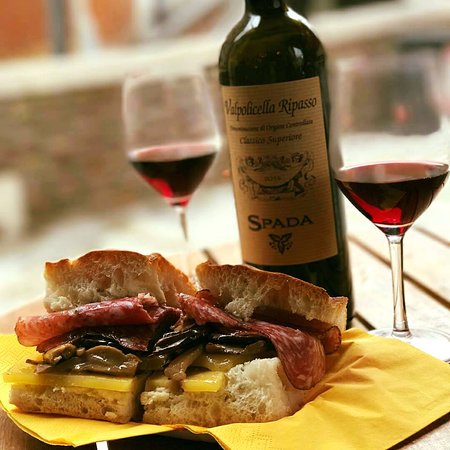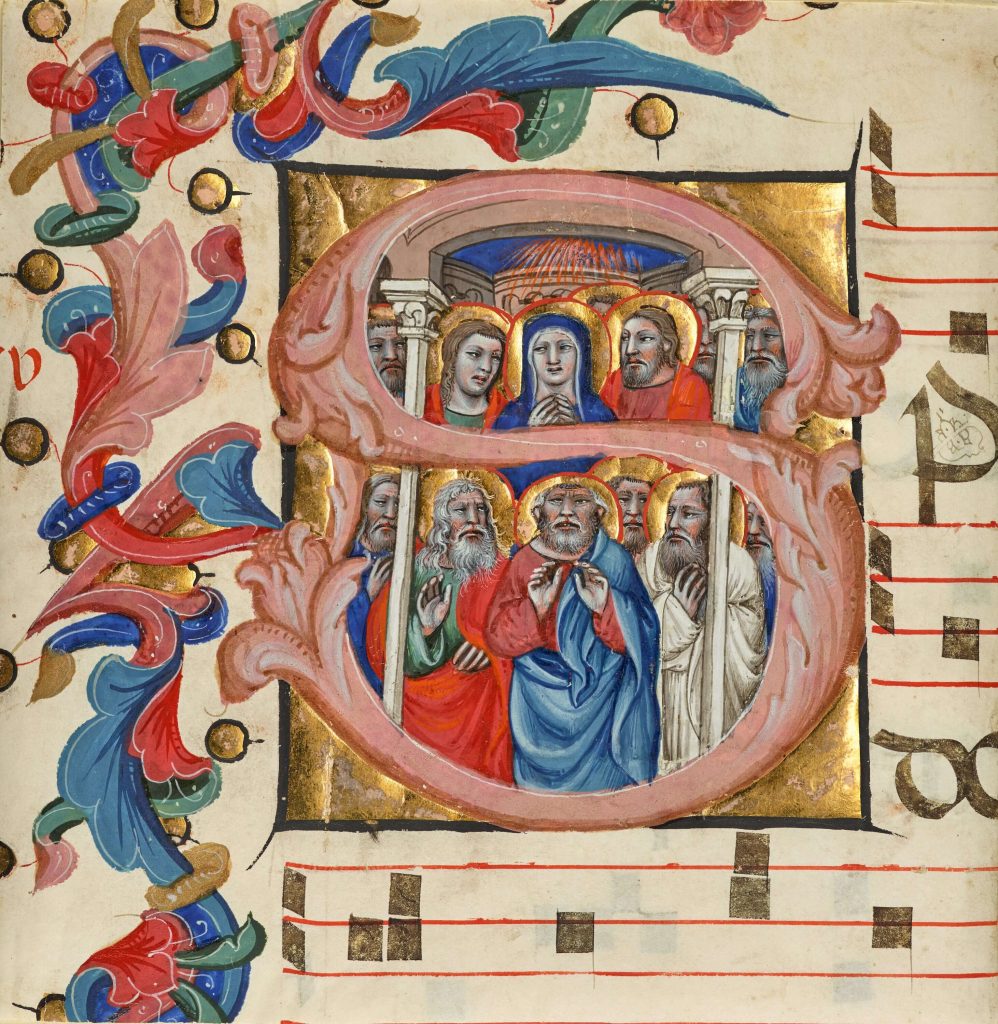Blood in (and as) Art
One of the first known expressions of human creativity, the Lascaux cave paintings, were created with blood, a material that has remained significant...
Kaena Daeppen 10 June 2024
Italy is famous for its great food and great art, so it shouldn’t come as a surprise that there’s some overlap. No, I’m not talking about art depicting food, although there’s plenty of that, too. I mean Italian artists with food words in their names. How many of these artists do you know? How many of these foods do you like to eat?

Francesco Mazzola “Parmigianino”, Self-Portrait in a Curved Mirror, c. 1523/4, Kunsthistorisches Museum, Vienna, Austria.
Francesco Mazzola, aka Parmigianino (1503–1540) was one of the founding artists of the Mannerist style. In fact, his famous painting The Madonna of the Long Neck is a classic example of Mannerism‘s theatrical exaggerations. He is also well known for Self-Portrait in a Convex Mirror (above), in which the convex mirror allows him an excuse to distort his long, elegant fingers where they touch its bottom edge. He also made many drawings and prints.
Even if you’re not a foodie, Parmigianino immediately brings to mind Parmesan cheese. That’s because both the artist and the cheese are named for Parma, the city and province of Italy from which they both come. Like many other Italian artists who moved around during their careers, Parmigianino acquired a nickname related to his hometown. Adding “ino” to the end of a word in Italian is a fond way of signifying something small, so Parmigianino roughly means “little man from Parma”.

Parmesan cheese from Parma, Italy. Travel+Leisure.

Giovanni Paolo Panini, Interior of the Pantheon, Rome, c. 1734, National Gallery of Art, Washington, DC, USA.
Giovanni Paolo Panini (1691–1765) was a Roman painter of vedute (views). This was a genre of highly-detailed images depicting urban scenery and tourist attractions in major Italian cities like Rome and Venice. The genre grew prominent in the 18th century, thanks to the popularity of the Grand Tour, in which wealthy Europeans took long, fashionable sightseeing voyages through Italy’s cultural capitals. Many bought view paintings to bring home with them as souvenirs.
Panini is the Italian word for sandwiches (Panino is the singular noun). Most of us know the panini as an especially delicious type of sandwich that is heated and pressed flat, but in Italy, it can refer to any kind of sandwich.

Panini served with a glass of wine, Venice, Italy. TripAdvisor.
This one is exciting because the artists and the food are directly related.
Vittore Carpaccio (1460/66–1525/26) and Giovanni Bellini (c. 1430/5–1516) were two Renaissance painters from Venice, both celebrated for their religious paintings and brilliant colors. (Venetian art in general is often associated with the use of particularly vivid colors.) Although Bellini has achieved international fame, Carpaccio is not especially well known outside of Italy, because the majority of his works are still in Venice. Both lent their names to new foods that were invented in their hometown but have now spread far beyond it.
Reportedly, a 1963 retrospective of Carpaccio’s work inspired Venetian restaurateur Giuseppe Cipriani to name his new dish after the artist. The Carpaccio features very thin slices of raw beef drizzled with sauce, and supposedly the blood red of the raw beef reminded Cipriani of the red tones seen throughout Carpaccio’s paintings. This wasn’t the only time Cipriani found inspiration in art history. He christened his now-famous peachy cocktail the Bellini because the drink’s color reminded him of the color of a Bellini saint’s garments.

Niccolò di Giacomo da Bologna, Initial S: Pentecost, about 1394–1402, Ms. 86, verso, 2004.48.verso, The J. Paul Getty Museum, Los Angeles, CA, USA.
Since Bologna was a great center of artistic production and home of the sausage-like lunch meat of the same name, there’s no lack of artists with “da Bologna” (from Bologna) in their names. I’ve chosen the 14th-century manuscript illuminator Niccolò da Bologna (active 1349–1403), but I could also have gone with religious painter Vitale da Bologna or sculptor Giovanni da Bologna to name a few others.
Niccolò da Bologna seems to have been a highly respected illuminator, and his works certainly compress a lot of vivid-yet-legible drama into small areas of manuscript pages. Because some of the manuscripts he decorated have since been cut up, individual images now appear in different museums around the world.

Bologna sausage. Mashed.

Agnolo Bronzino, Portrait of Lodovico Capponi, c. 1550-1555, The Frick Collection, New York, NY, USA.
Agnolo di Cosimo, aka Bronzino (1503–1572) was a Mannerist painter from Florence and a contemporary of fellow food-named Mannerist Parmigianino. The two were born the same year, but Bronzino lived much longer. He is commonly known for his refined portraits, but he also made more overtly Mannerist works like the strange and unsettling An Allegory of Venus and Cupid. His nickname, basically meaning “bronzed”, probably referred to his dark complexion.
Meanwhile, Branzino – spelled slightly differently, but close enough – is a type of sea bass, a mild white flat fish native to the Mediterranean. It’s commonly found in Italian and other Mediterranean cuisines, and it’s difficult not to think of the artist whenever it comes up on the menu.

Roasted Branzino dish. The Mediterranean Dish.

Carlo Dolci, Madonna and Child, c. 1660/70, Kunsthistorisches Museum, Vienna, Austria.
Dolce means “sweet” – it’s also the Italian equivalent of “dessert”. That makes it a fitting name for Florentine Renaissance painter Carlo Dolci (1616–1687), who specialized in soft, refined, and lovely religious paintings. If Dolci’s art was a dessert, I imagine it would be some kind of light and delicious Italian cake, not too sweet and maybe with some subtle spice.

Italian cannoli. Taste.
And speaking of dolce…
Renaissance darling Raphael Sanzio‘s (1483–1520) name is spelled Raffaello in Italian, which is also the name of a coconut and cream candy from celebrated Italian candy maker Ferrero. It’s unclear if the so-called “Prince of Painters” inspired the candy’s branding in any way, but I wouldn’t be surprised if he did.

Raffaello coconut candy. Axon.

Henry Fuseli, The Nightmare, 1781, Detroit Institute of Arts, Detroit, MI, USA.
Henry Fuseli (1741–1825), a Swiss-born Romantic painter of monsters, demons, and nightmares, wasn’t an Italian artist. However, his last name always makes me think of a very Italian food with the same pronunciation – the spiraled pasta called fusilli. That’s way too good to ignore in my opinion, so Fuseli gets an honorable mention here.

Fusilli pasta. The Spruce Eats.
DailyArt Magazine needs your support. Every contribution, however big or small, is very valuable for our future. Thanks to it, we will be able to sustain and grow the Magazine. Thank you for your help!